A policy running into 484 pages is unheard of; ‘unbearable’ too. The report on education policy, every now and then, tests the patience of the reader keen to know what exactly the draft says. But the problem is.. the report is far from being exact in any area of education. While the language is taxing, the arguments are too childish.
Where the committee speaks about the need for multilingualism, it dwells at length on the difference between English and Indian languages which is simply uncalled for. Why should two languages be compared at all?
A language is not ‘made’; it evolves. It initially takes the form that suits certain section of people who speak it locally. So naturally, the language, at the stages of evolution, imbibes the qualities and characteristics of the local customs and traditions. As it spreads its wings and as it grows into a well structured medium of communication, Language takes a much liberal form – allowing the ‘alien’ elements into it transcending the ‘barriers of nativity’. This is as simple as that.
No language on earth can be ‘pure’ as none can be ‘impure’ as well. There is nothing like ‘adulteration’ in a language; it is ‘adaptability’ rather. Any language that is too rigid to accept any modification is bound to lose its relevance in the long run. It means that every language is in a way inter-connected and inter-dependent too. We need no further elaboration on this subject.
This theory on languages negates any attempt of comparing any two languages. The makers of education policy ought to have known this basic fact. But shockingly, the report under the caption ‘Multilingualism and power of language’ (on page 81) tries to present a strong case against English language in which, ironically, this report has been written.
If a language is ‘un-phonetic and complicated in its spellings’, let it be so. Equally, there might be many advantages too that are not found in other languages. It is a very common, general phenomenon. The strength or the weakness of a language emanates from the competency or the lack of it of the person who uses it. It is nothing more; nothing less.
The attempt by the policy makers to field ‘Indian languages’ against English is in no way different from what the so called ‘fighters’ in Tamilnadu are trying to do to gain political mileage. In fact, the protests in Tamilnadu are understandable because there is the element of a certain degree of apprehension in the minds of the Tamils about imposition of a language on them. Anything imposed is bad and hence it is but natural that a mass uprising follows any such misadventure by the authorities concerned.
But, where is the need for the committee to discriminate one against the other? Is it all right just because it is a ‘foreign’ language? To call Indian languages ‘most scientific’ and to say there is the “apnaapan” quality in them could have been avoided. The primitive argument of the learned committee does not add any favour; instead, it tastes bitter – something unintentional we believe. Can you dispel suspicion by pouring hatred in to it?
While the committee decides to play the dangerous game of pitting a language against the other, it renders itself answerless. This is perhaps the reason why the committee in a state of helplessness instantly came forward to make suitable amendments as demanded by Tamilnadu.
What is more shocking and objectionable is to link proficiency in English to one being elite. The report reads thus: ‘since Independence, the economic elite of India have adopted English as their language; only about 15% of the country speaks English, and this population coincides with the economic elite (compared with, e.g. 54% of Indians who speak Hindi). This sad scenario and attitude (it may well be inadvertent)has resulted in the marginalisation of large sections of society…’
Does this argument merit a serious discussion? The economic elite and proficiency in English could at the most be a coincidence and inadvertent. The committee has included these two terms to save themselves from a possible rebuke.
The committee has at the same time ‘inadvertently’ admitted that only 58% of Indians ‘speak’ Hindi. This gives enough ammunition to the ‘other’ 48% of Indian population to stoutly oppose introduction, if not imposition, of Hindi.
‘For true equity and inclusion in society, and in the education and employment system across the country, this power structure of language must be stopped at the earliest’. The report then raises the most debatable point when it says – ‘it is strongly recommended that interactions between people within India be conducted in languages native to India.’ (page 82) This is clearly in violation of the present practice and is trying to remove the status of English as the link language in our country.
The committee does have the responsibility to explain to the people, particularly of South India, about the need for a change in the status quo. This ‘strong recommendation’ does give a wrong signal of ‘something’ being imposed against the wishes of the people.
‘Continuation of three language formula in schools’ is the next caption followed by ‘Implementation of the three language formula’. We can appreciate the ‘spirit of national integration’ behind the suggestion. But the question is – in what way does the present set up hinder integration? Are the people not ‘integrated’ now?
It would have been better if the committee had not brought the ‘integration’ part into the study of a third language. This remark places the people opposing this idea in an uncomfortable position of being labelled ‘anti-integration’. It gives the impression of a calculated gamble by the committee which would do more harm than good.
‘Recruitment of teachers for language teaching’ and ‘learning science bilingually’ and ‘flexibility in the choice of languages’ are good moves.
P4.5.10 says – ‘A choice of foreign languages would be offered and available to interested students to choose to choose as elective(s) during secondary school.’ (pity is – the report gives examples -French, German, Spanish, Chinese, Japanese as if we do not know what ‘foreign language’ means!!!) This suggestion would enhance the cost of school education as it involves recruitment of teachers of these languages. To many of the private institutions that are in financial crunch already, this provision would increase their burden and add to their woes.
‘Scientific temper’, ‘Arts and aesthetics’, ‘technology use for bringing the arts to more students’ and ‘interaction with local artists’ offer nothing exciting and sound more like an extended lecture of a boring professor talking well beyond lunch time.
‘Physical education wellness and sports (4.6.4) is a step in the right direction. ‘Incorporating physical education, mind and body wellness and sports into the curriculum at the Foundational stage offers breather in the otherwise suffocating part of the report.
The segment 4.6.5 on ‘problem solving and logical reasoning’ is the funniest part. It gives examples for test of reasoning! ‘A farmer travelling with a fox, a goat and head of cabbage needs to cross the river by boat… It is unimaginably ridiculous for a ‘Policy document.’ Sorry.
The following part on Vocational exposure and skills says – ‘schools may choose a subset of livelihoods and related skills that are of value to the local community. Artisans and practitioners will be hired as tutors by school for teaching each of these skills and tutors may be shared across multiple schools’. It is a healthy idea and may fetch good results if properly implemented.
Let us move on to ‘Digital Literacy’.
(to continue…
Baskaran Krishnamurthy.
Mail: [email protected]


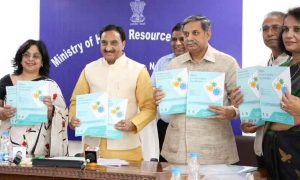



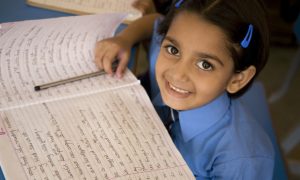

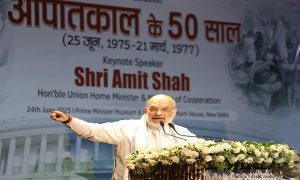



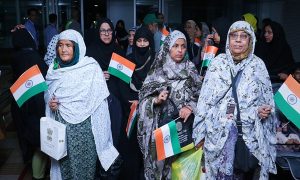



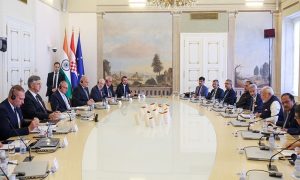









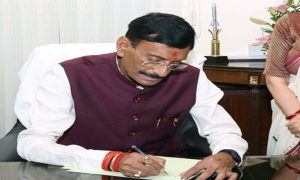

 WhatsApp us
WhatsApp us